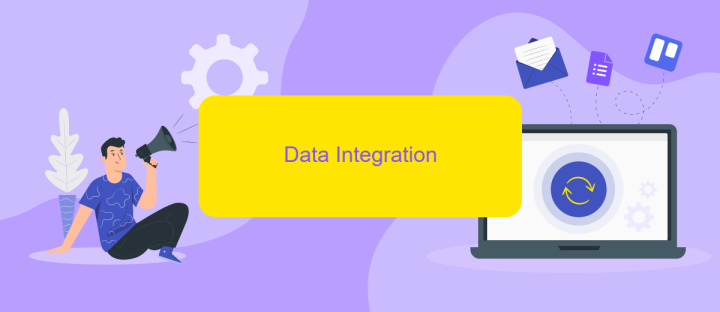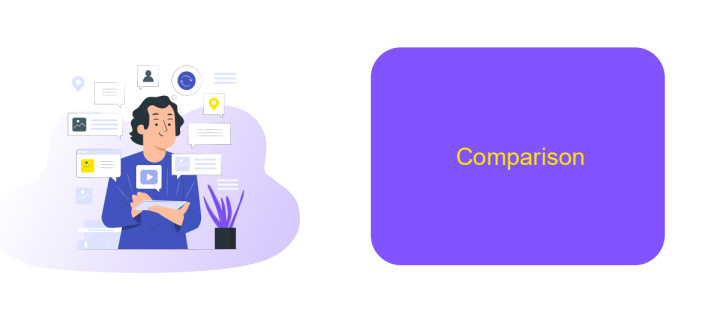API Integration vs Data Integration
In today's digital landscape, businesses are increasingly reliant on seamless data flow and system interoperability. Two key approaches to achieving this are API integration and data integration. While both aim to streamline processes and enhance functionality, they differ fundamentally in their methods and applications. This article explores the distinctions, benefits, and challenges of API integration versus data integration, helping you make informed decisions for your organization's needs.
Introduction
In the ever-evolving landscape of technology, businesses are increasingly looking towards integration solutions to streamline operations and enhance efficiency. Two prominent methods of achieving this are API integration and data integration. While both aim to connect disparate systems, they do so in fundamentally different ways, each with its own set of advantages and challenges.
- API Integration: Facilitates real-time communication between systems.
- Data Integration: Focuses on consolidating data from various sources into a unified view.
- Flexibility: API integration offers more dynamic interactions, while data integration provides comprehensive data analysis.
- Complexity: API integration can be more complex to implement, whereas data integration often involves significant data transformation efforts.
Choosing between API integration and data integration depends on the specific needs and goals of an organization. For instance, services like ApiX-Drive can simplify API integration by providing user-friendly platforms to connect various applications seamlessly. Understanding the nuances of each approach will help businesses make informed decisions and leverage the right integration strategy to achieve their objectives.
API Integration

API Integration involves connecting different software systems and applications through Application Programming Interfaces (APIs). This process allows for the seamless exchange of data and functionality between disparate systems, enabling them to work together more efficiently. By utilizing APIs, businesses can automate processes, enhance interoperability, and reduce the need for manual data entry, ultimately improving overall productivity and accuracy.
One effective tool for setting up API integrations is ApiX-Drive. This service simplifies the integration process by providing a user-friendly interface and a wide range of pre-built connectors for various applications. With ApiX-Drive, users can easily link their software systems without requiring extensive technical knowledge, ensuring that data flows smoothly and securely between platforms. This not only saves time and resources but also minimizes the risk of errors that can occur with manual integration efforts.
Data Integration

Data integration is the process of combining data from different sources to provide a unified view. This technique is essential for businesses that need to analyze large amounts of data from various systems to make informed decisions. By integrating data, organizations can streamline operations, enhance data quality, and ensure consistency across all platforms.
- Identify data sources: Determine which databases, applications, or systems need to be integrated.
- Choose integration tools: Select appropriate software or services, such as ApiX-Drive, to facilitate seamless data integration.
- Data mapping: Define how data from different sources will correspond to each other.
- Data transformation: Convert data into a consistent format for easy analysis and reporting.
- Data loading: Transfer the integrated data into a centralized repository or data warehouse.
Effective data integration leads to better decision-making and operational efficiency. Tools like ApiX-Drive simplify the process by automating data transfers and ensuring real-time synchronization between systems. This allows businesses to focus more on analyzing data rather than managing it, ultimately driving growth and innovation.
Comparison

When comparing API Integration and Data Integration, it's important to understand their distinct roles in modern IT ecosystems. API Integration focuses on enabling applications to communicate with each other, facilitating seamless data exchange and functionality extension. On the other hand, Data Integration is concerned with consolidating data from different sources into a unified view, ensuring consistency and accessibility for analysis and reporting.
API Integration is typically used for real-time data exchange and interaction between different software systems. This type of integration is crucial for applications that need to work together dynamically, such as CRM systems and e-commerce platforms. Conversely, Data Integration is often employed for batch processing and data warehousing, where the goal is to aggregate data for comprehensive analysis.
- API Integration: Real-time data exchange, dynamic interaction, application communication.
- Data Integration: Data consolidation, batch processing, unified data view.
Choosing between API Integration and Data Integration depends on your specific needs. If real-time interaction and seamless application communication are priorities, API Integration is the way to go. Services like ApiX-Drive can simplify this process by providing tools to easily connect various applications. For extensive data analysis and reporting, Data Integration offers a more suitable approach, ensuring all data sources are harmonized into a single, coherent dataset.
Conclusion
In conclusion, both API integration and data integration play crucial roles in modern business operations, each offering unique advantages. API integration excels in real-time data exchange and seamless communication between disparate systems, making it ideal for dynamic environments where immediate data access is essential. On the other hand, data integration focuses on consolidating and harmonizing data from multiple sources into a single, unified view, which is invaluable for comprehensive data analysis and reporting.
Choosing between API integration and data integration largely depends on the specific needs of your organization. For businesses requiring real-time interactions and automated workflows, leveraging tools like ApiX-Drive can simplify the process of setting up and managing API integrations. Conversely, if your goal is to aggregate data for in-depth analysis, data integration solutions will be more appropriate. Ultimately, the right approach may involve a combination of both strategies to fully harness the potential of your data and systems.
FAQ
What is the difference between API Integration and Data Integration?
When should I use API Integration over Data Integration?
What are the benefits of using API Integration?
Can I use API Integration and Data Integration together?
What tools can help with API Integration?
Do you want to achieve your goals in business, career and life faster and better? Do it with ApiX-Drive – a tool that will remove a significant part of the routine from workflows and free up additional time to achieve your goals. Test the capabilities of Apix-Drive for free – see for yourself the effectiveness of the tool.

